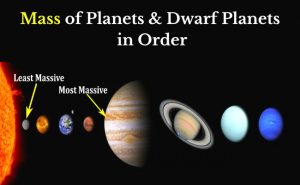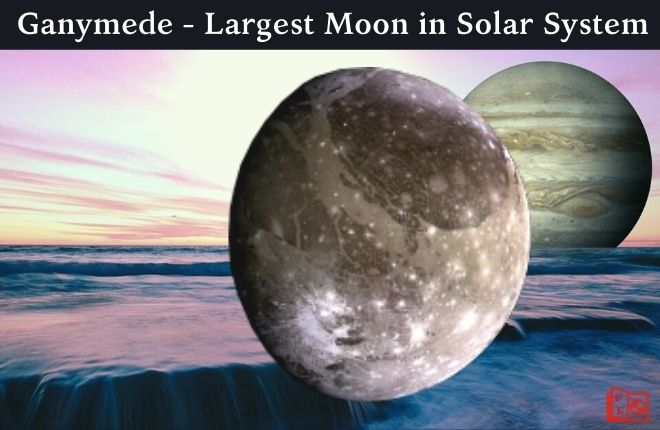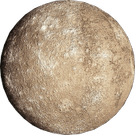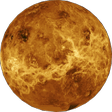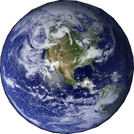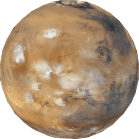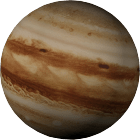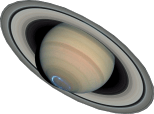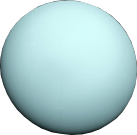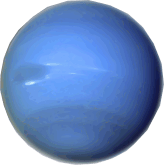Ganymede is the largest moon of planet Jupiter as well as the largest of our solar system. Ganymede moon is larger than Planet Mercury and Dwarf Planet Pluto. It is the 9th largest object in our solar system after the sun and 7 planets.
Ganymede is one of the Galilean Moons (Io, Europa, Ganymede, and Callisto) discovered by Galileo Galilei in 1610. It is the only known moon that has its own magnetosphere. This moon was named after a Trojan prince Ganymede, who was turned into an eagle by Zeus and became a cupbearer for the Olympian Gods.
| Check About:- Total Moons in the Solar System with Facts |
Physical characteristics of Ganymede:-
- Moon of: Jupiter
- Orbital period (1 Year): 7.15 days
- Revolution period (1 Day): 7.15 days
- Discovery Date: 7 January 1610
- Orbital distance: 1.07 million kilometers
- Average orbital speed: 10.88 km/sec around the Jupiter
- Diameter: 5,268 km (3,273 mi)
- Mass: 1.5 × 1023 kg (0.025 times of earth)
- Volume: 7.66 × 1010 km3 (0.07 times of earth)
- Average density: 1.93 gm/cm3
- Surface gravity: 1.43 m/sec2 (0.146 times of earth)
- Escape velocity: 2.74 km/sec
- Average surface temperature: -163 °C
Information and Facts about Ganymede Moon
Here in this article, we have mentioned almost all the information and some interesting facts about Jupiter’s biggest moon Ganymede.
1. First discovered object to orbit a planet
On 7 January 1610 Galileo Galilei seen ‘Ganymede moon’ with ‘Calisto’ and a combined light coming from ‘Io’ and ‘Europa’. Firstly he thought these are the stars. On 13 January he saw separated lights coming from these moons and on 15 January he came to the conclusion that these four are actually bodies orbiting Jupiter, not stars.
Later these four moons are known as Galilean Moons (Ganymede, Calisto, Io, and Europa). For a fact, Galilean Moons, not only Ganymede, were the first discovered object to orbit a planet after the Earth’s moons (No indication of its discovery).
“Before the discovery of these moons, no one knows an object could have orbited a planet. In our solar system, it is the largest and most massive object to orbit a planet”.
2. Third from Jupiter in Galilean Moons
The Galilean Moons from the Jupiter surface in order of increasing distance are Io, Europa, Ganymede, and Callisto. These moons are also known as Jupiter I (Io), Jupiter II (Europa), Jupiter III (Ganymede), and Jupiter IV (Callisto).
Ganymede is the third Galilean Moon of Jupiter in order of increasing distance. The moon ‘Io’ orbit Jupiter from a distance of around 422,000 kilometers. Whereas the moon Ganymede orbit Jupiter from an average distance of around 1,070,400 kilometers.
| Check About:- Most Interesting facts about Planet Jupiter |
3. Largest and most massive in Galilean Satellites
In Galilean Satellites, it is the largest and most massive moon. So Ganymede is the largest moon of Jupiter with a diameter of around 5,268 km (3,273 mi). It is also the largest and most massive moon in our solar system.
4. Biggest moon of the biggest planet
As we know Jupiter is the biggest planet in our solar system with a diameter of around 139822 km. And Jupiter’s largest moon is Ganymede. So it is the biggest moon on the biggest planet.
5. One day and one year on this moon is almost the same (tidally locked)
Most of the moon in our solar system is tidally locked. Tidally locked is a case when an orbiting body always faces the same side toward the orbiting object. And thus it takes the same time to complete one orbit around the object and one revolution around its own axis.
Ganymede is also a tidally locked moon and always faces the same side towards Jupiter. It completes one orbit around Jupiter in 7.15 Earth days and that is called one year of this moon. And at the same time, it revolves around its own axis and completes one day.
| Must Check for:- How Long is a Day and Year on each Planet |
6. Only known moon to have a magnetosphere
American space probe ‘Galileo’ made some close flyby to Jupiter and its moons between 1995 to 2000. This spacecraft discovered the magnetic field in the Ganymede moon. So this is the only known moon to have a magnetosphere.
This strong magnetosphere is created by a convection phenomenon within its liquid iron core. According to a study, the magnetic moment of this Jovian moon is three times stronger than the magnetic moment of planet Mercury.
- (Also read about: Magnetosphere of the Earth)
7. Ganymede moon is larger but less massive than Mercury Planet
The diameter of the planet Mercury is around 4880 kilometers, whereas the diameter of this moon is around 5268 kilometers. And thus Ganymede is almost 8 % larger than Planet Mercury. It is also larger than the dwarf planet Pluto. While comparing with Earth, Ganymede is 41% smaller than our home planet.

Though the average density of this moon is 1.93 gm/cm3, whereas the average density of Mercury is 5.43 g/cm3. Hence a fact about Ganymede is, it is less massive than Mercury Planet.
The mass of Mercury is 3.30×1023 kilograms and the mass of Ganymede is 1.5 × 1023 kg that is almost half of Mercury.
8. If it were orbiting Sun it would be considered a planet
It does not orbit the sun directly, though it orbits planet Jupiter. It is so large and massive that if it were orbiting the sun, it would have been considered a planet or a dwarf planet.
| Must Check:- Eight Solar System Planet Facts |
| Must Check:– Five Dwarf Planet Facts |
9. It may contain more water than all Earth’s ocean
Ganymede is mostly made of rocky materials (silicate rocks) and water ices. In 2001 after studying the data collected by ‘Galileo’ spacecraft, scientists announced that Ganymede water ices could be in form of liquid water forming underground oceans.
The amount of these underground oceans’ water could be more than all combined oceans of the earth’s water.
10. It has a thin atmosphere that contains oxygen
A team of Indian, British, and American astronomers claimed that they detected a thin atmosphere in the Ganymede moon while working in Java (Indonesia) and Kavalur (India) in 1972. And according to their estimation, the surface pressure of that atmosphere was around 0.1 Pa (1 microbar).
According to data collected by Hubble Space Telescope (HST) in 1995 the Ganymede satellite has a thin oxygen atmosphere that includes O, O2, and possibly O3 (ozone).
- (Read About: 5 layers of the atmosphere of Earth)
11. Ganymede surface is covered with two types of region
The surface of Ganymede is composed of two types of terrain (regions): 1. Dark regions, 2. Lighter regions.
The dark regions are quite old and have many impact craters. This dark region covers 40 % of the moon’s surface. The craters in the dark region of Ganymede are believed to be formed by the impact of asteroids and comets.
Whereas the lighter regions are ancient but not much older, have lines of grooves and ridges. It covers 60 % of the surface of the moon.
12. Many Spacecraft have flown by the Ganymede moon so far
Several spacecraft have flown by planet Jupiter and Jovian moons including Ganymede.
The American space probe ‘Pioneer 10’ approached in 1973 and Pioneer 11 in 1974. Pioneer 10’s closest approach to Ganymede was 446,250 kilometers.
NASA’s spacecraft ‘Voyager 1’ and ‘Voyager 2’ passed near to this moon in 1979. They saw the grooved terrain surface and confirmed it as the largest moon (Saturn’s moon ‘Titan’ was previously thought to bigger than this before confirming by these space probe).
Then in 1995 spacecraft ‘Galileo’ visited and flown by near Jupiter and its moon. It studied and discovered about magnetosphere of Ganymede and internal water oceans.
Interplanetary space probe ‘New Horizons’ recorded topographic and compositional mapping data of Ganymede and Europa in 2007.
The most recent on 25 Dec 2019, NASA’s spacecraft ‘Juno’ flew by Ganymede and taken images of its polar region.
Scientists are still exploring Ganymede the largest moon of Jupiter. More missions are yet to come in the future to explore this amazing Jupiter’s largest moon.
I hope you have liked the information and facts about the Ganymede moon. Check here the total number of Jupiter moons. (Jupiter Moons: Facts, Names, Numbers & List)
- How Many Planets Exist in the Universe — A Cosmic Estimate
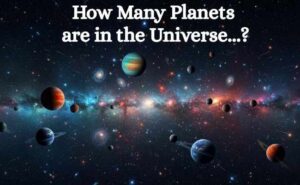
- 5 Best Solar System Backpacks in 2025

- Mass of Planets in Order from Lightest to Heaviest
